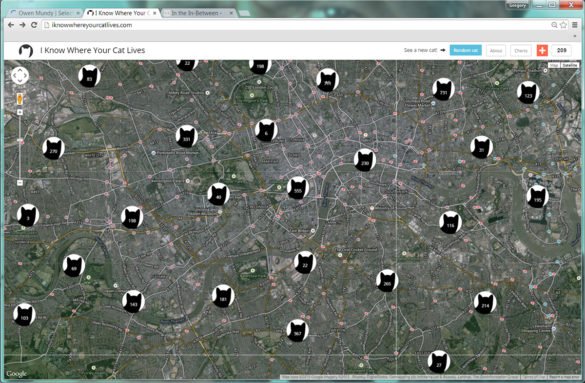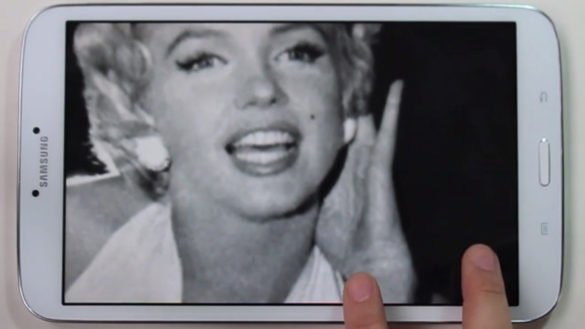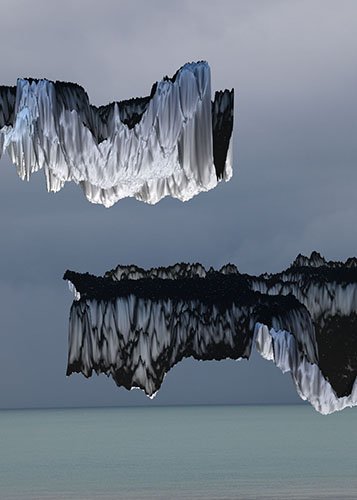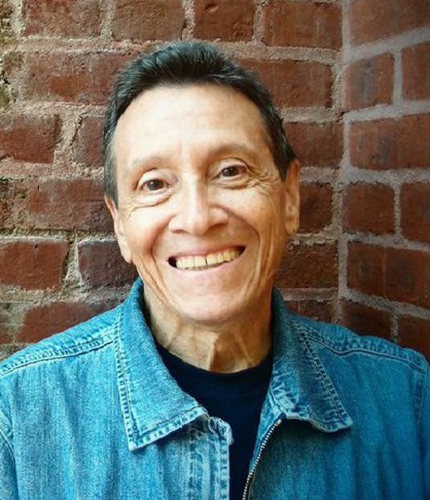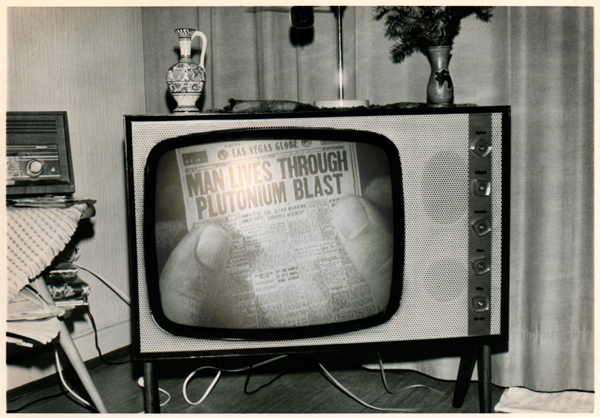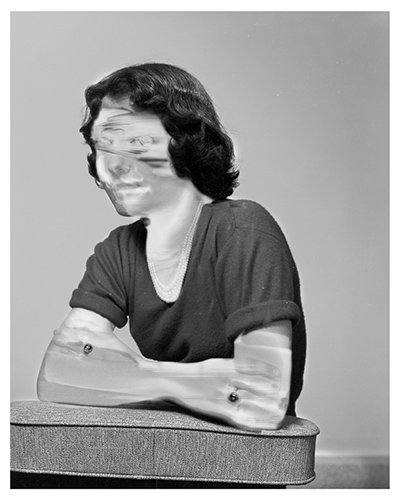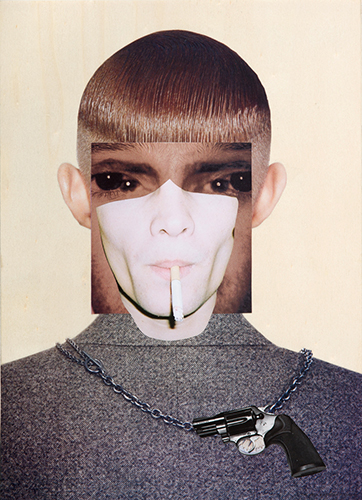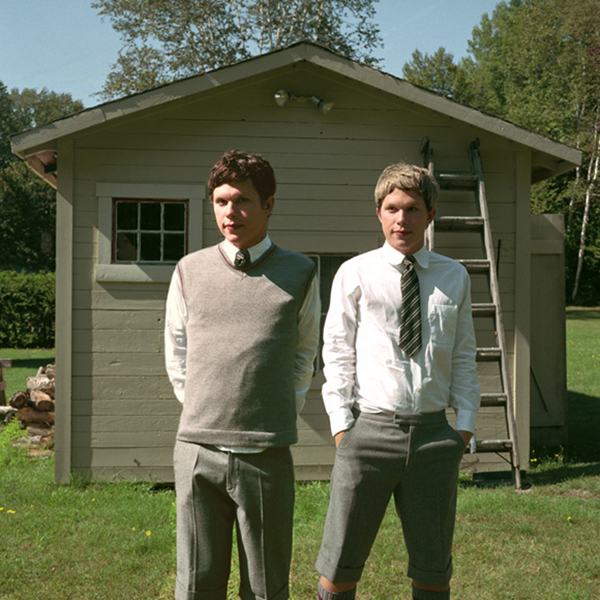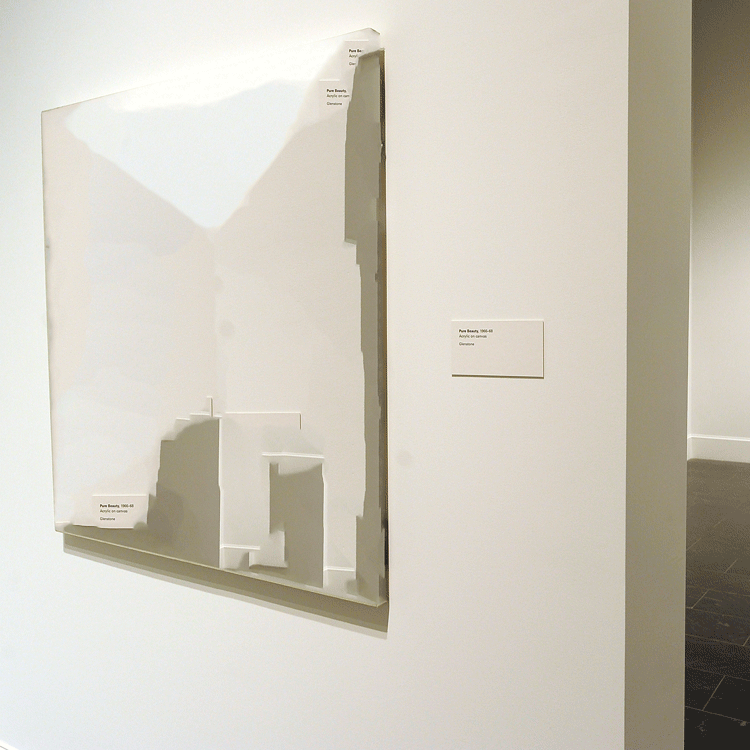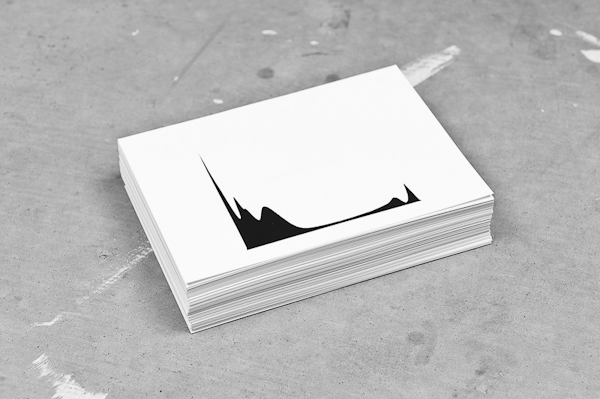I Know Where Your Cat Lives is a data experiment that visualizes a sample of 1 million public pics of cats on a world map, locating them by the latitude and longitude coordinates embedded in their metadata. The cats were…
Gregory Eddi Jones
Intrigued by Apple’s patent on finger motions– claiming rights on muscle memory, the tangibility of pinching through physical representations of time enables us to interact directly…
For many years, photography has been seen as a representation of the natural world. Today, information captured by a camera can be changed by playing with the information given to the algorithm in Photoshop. Beginning with a standard digital image, I select several portions of the image as layers, and alter them using various Photoshop 3-D tools. The individual selections of clouds, rocks, trees and et cetera become new images, which are then re-integrated into the original. This method of creating a picture within a picture is my way of questioning the nature of…
A.D. Coleman has been writing about the field of photography for over 45 years. As the first photo critic for the New York Times, he saw firsthand the rise of the medium’s stature in the art field during the late ’60s, and has continued to track its long and ever-expanding evolution since that time. Throughout his career, he has taken close interest in the rise of electronic and digital media, following its developments…
When I was seven years old, my mother dropped my brother and I off at a movie theater on a summer afternoon to see “The Amazing Colossal Man”, one of many cheaply made science fiction movies…
The Background Noise work arose entirely out of chance and accident. I was scanning a negative, and somewhere along the way the file corrupted. The resulting image exhibited traces of its source, but was largely ruptured, an example of the kind of schism that permeates the digitization process. I was drawn to the mishap from an aesthetic standpoint, but even more so it underpinned an anxiety that I felt…
On March 21st, 2014, the collaborative duo Nate Larson and Marni Shindleman took to Facebook, Twitter, Instagram, and Snapchat to answer questions by In the In-Between writer Luke Shaw. This conversation began with the question: How can human intimacy can be attained through digitally mediated dialogue?
I exploit magazines because I like to respond to what I see every day, I don’t accept the found reality. In my work I want to transfer the found photographs by very simple means into a new aesthetic context. I want to revitalize the found photographs. Like in a centrifuge I try to dissect, filter and distil the images since I can create really new identities and creatures, so that the new faces and bodies exert their effect at first sight. Similar to a modern DJ who samples different tracks…
There was a moment at the turn of the century at which digital imaging technologies matured, at which the aesthetics of photo-realism ascended beyond the digital kitsch experiments of the previous decade. The mastery of digital tools spurred a re-evaluation of and insight into the photographic canon, and pictorial genres of the past began to…
For the last few years I’ve been using “installation view” photographs as sources for works examining our online encounter with art set in physical spaces. As someone who lives away from major art cities and centers, I’m drawn to the material and conceptual conditions that surround the careful composition, presentation…
At some point it began to matter to me how I thought about Robert Frank’s The Americans. To be sure, the book had for some time served as a reference for me, a kind of Strunk & White for photography…
Through the Go ogle series I seek to examine the visual experience of the internet, proposing a visual means of exploring encounters with the increasingly ubiquitous screen-based landscapes through which we routinely meander. Although these…

